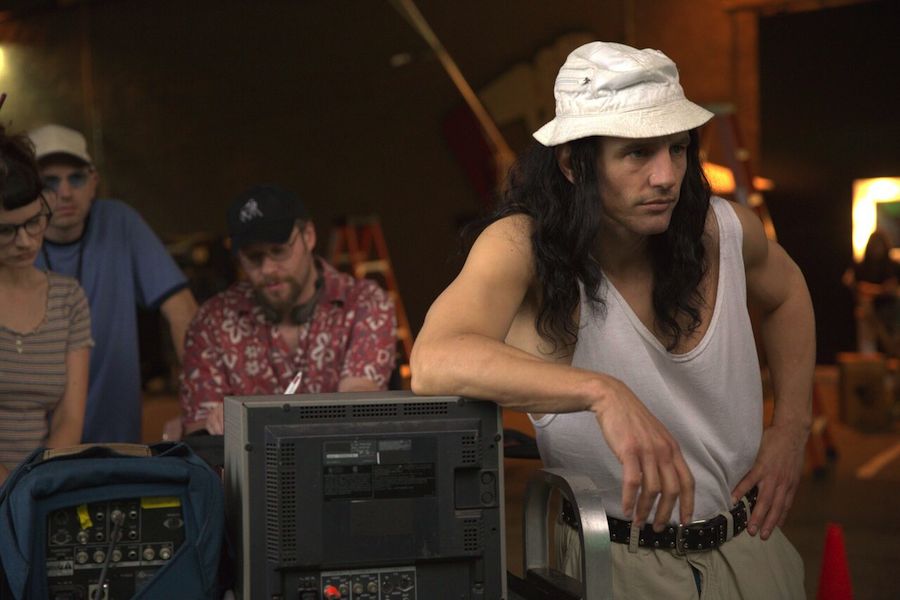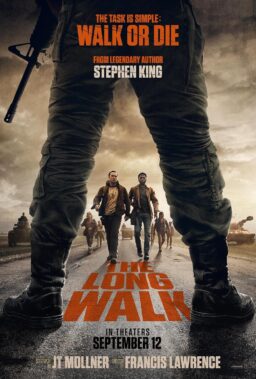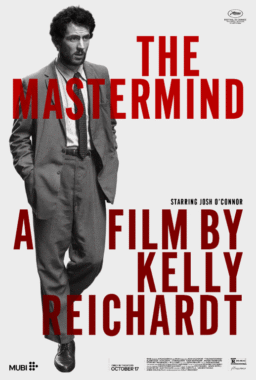Closure is a remedy so rarely granted in life. We often look to films to help us make sense of experiences for which there are no easy answers, and the best works of cinematic art have the potential to heal emotional wounds for far less money than a psychiatric session. Eight years ago, I was struggling to get over my break-up with my girlfriend, Lisa (yes, she tore me apart), and two key films helped me to let go of the relationship. Marc Webb’s “(500) Days of Summer” gave me hope for the future, while Tommy Wiseau’s “The Room” allowed me to laugh at the past by inadvertently illuminating the absurdity of wallowing in one’s own self-pity.
So it feels only appropriate that the screenwriters of “(500) Days of Summer,” Scott Neustadter and Michael H. Weber, have now adapted The Disaster Artist, Greg Sestero and Tom Bissell’s wonderful book about the making of Wiseau’s cult phenomenon, into a feature film. With its laughable tale of a pure-hearted simpleton, Johnny (Wiseau), driven to suicidal depression by the infidelity of his “future wife,” Lisa, “The Room” presents the male ego stripped of all sophistication and competence. As director and star of “The Disaster Artist,” James Franco attempts to get at the heart of Wiseau’s friendship with Sestero, who played the role of Johnny’s best friend (and Lisa’s secret lover), Mark.
Soon after winning the Best Adapted Screenplay prize from the National Board of Review, Weber and Neustadter spoke with RogerEbert.com at Emporium Chicago’s ingeniously designed “The Room” pop-up bar. The space selected for the interview was an exact replica of Johnny’s living room, complete with framed pictures of spoons on the mantle. In the following conversation, the acclaimed writing partners discuss the more troubling aspects of Wiseau’s picture, their hope that “The Disaster Artist” will instill more empathy in “Room” fans, and the inherent dishonesty of “happily ever after.”
Considering that “(500) Days of Summer” was based off of Scott’s own break-up, how were you both able to explore the subject matter with enough objectivity to avoid making a one-sided misogynistic mess like “The Room”?
Scott Neustadter: (SN): That’s a very good question.
Michael H. Weber (MW): Having two people helped. I was there to tell him, “You’re being a crazy person right now.” [laughs]
SN: Yes, that was said a lot. [laughs] My ex actually got engaged when we were in the middle of writing the film and it ended up defining the direction of the script. The female character wants the same thing that the male character wants, he just isn’t the person she’s looking for. She isn’t the villain of the story. I had been feeling angry and bitter about the relationship, but that revelation helped me to let go of it.
MH: Until that happened, we were kicking around the idea of a “chase in the rain” ending that left open the possibility of the couple getting back together, rather than acknowledging that their time together was a passing phase in their lives.
SN: We essentially had a 205-page first act until we realized, “Oh that’s the story we’re telling here.”
<span id=”selection-marker-<span id=”selection-marker-1″ class=”redactor-selection-marker”></span>1″ class=”redactor-selection-marker”></span>
What do you personally find amusing about “The Room”?
SN: The Denny stuff kills me every time. I don’t know if it’s “ha ha” funny or if it’s just so goddamn bizarre that it tickles my funny bone. Certain moments such as when Greg almost kills the psychologist character, and then a second later is like, “I’m sorry man,” are so f—king preposterous.
MH: There are a thousand little choices made in the film that make me think, “I’m not even an actor, and that wouldn’t be my choice. As a screenwriter, that wouldn’t be my choice…”
SN: In the middle of the party scene, the film cuts to an establishing shot of a building, and you’re like, “I guess we’ll be going to wherever that is.” And then it just cuts back to the party. That stuff is funny.
How open was Greg to you during the process of writing this script?
MH: With every adaptation we’ve done, we’ve had a different relationship with the author. John Greene has been great to us and very deferential. Greg and Tom Bissell were tremendous—they trusted us to be fair to Greg and Tommy’s story and really capture the spirit of it. They knew that we couldn’t use everything because it would’ve resulted in a nine-hour movie. A certain amount of creative license had to be used to craft it so that it was a self-contained movie with a coherent narrative arc. Greg got that and was a champion for us. That guy’s been in our corner since day one.
SN: We were definitely more concerned with what Tommy was going to think. He is such a wild card. We’ve done a bunch of adaptations now, and our process is almost always like, “Let’s write the best version we know how to, and then give it to the author to check out and make sure that we didn’t do anything that they have an issue with.” Then it becomes a dialogue and a collaboration. We’ve had a fortunate experience with pretty much everybody. They are appreciative and they get that we had to make certain creative choices while preserving the spirit of what they had written. But Tommy could’ve been—who knows?
MH: It’s a credit to James Franco and Seth Rogen, because they sort of shielded us from Tommy while the writing was happening. That is what good producers do. They allowed us to write the best possible story while entrusting that it would be fair to Tommy, which I think we were.
SN: I think Greg would’ve had a harder time showing his memoir to Tommy and gaining his approval. We had that one degree of separation where we were basing it on Greg’s book.
MH: I’m not entirely convinced even now that Tommy understands and accepts that there were screenwriters. I think he probably vacillates between, “Franco just whipped this all up,” and, “Greg maybe wrote it.” We spent a lot of time with Tommy, and every time we met up with him, it was like a new introduction. In a way similar to “Memento,” Tommy doesn’t seem to hold onto us, which is totally fine and maybe for the better.
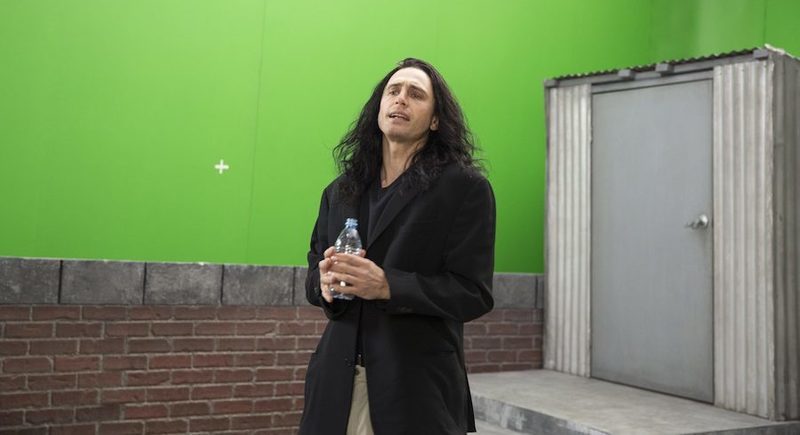
When you have so much mystery surrounding the main character in your movie, how do you go about filling in those blanks yourself?
MH: It’s a great question. We never wanted to decode Tommy and have “The Disaster Artist” be the Rosetta stone of “The Room.” The questions are so much more interesting than the answers. The fact that Tommy guards the answers is much more interesting than the answers themselves. For us, it was always about the story of this friendship. What’s interesting is that Greg never asked those questions until late in the movie, when he was starting to doubt the friendship. That’s the moment when he’s like, “Are you really my friend? What do I really know about you? What kind of friends are we if I don’t know any of these basic things about you?
As a screenwriter, I only asked these questions when they were in service of the tension in this friendship, particularly when their bond threatens to fracture. Otherwise, it’s not really worth going down the rabbit hole because every time that you learn the answer to something, you have ten more questions anyway.
James Franco’s performance humanizes Tommy to the point where I began pondering whether his behavior is indicative of more serious problems. It caused me to question whether I should actually be laughing at his film.
SN: We definitely wanted the audience to reflect on those questions. Michael and I were leaning on the dramatic elements of the story, and assumed that the cast would come in and bring the funny. “The Room” is funny and these actors are funny, but the storyline about the friendship needs to have enough emotional substance to hang a movie on. We were encouraging James to portray the sadder aspects of Tommy, and then the editor ultimately decided whether the tone in each scene was too dark or too light. We shouldn’t have to humanize someone who is already a human, but in the case of Tommy, it’s been fun to show audiences all the ways in which he is just like them. We want viewers to relate to him.
MH: I feel almost protective of him now in some ways. It bothers me when people grill him about what country he’s from. As far as I’m concerned, he’s an American. I don’t know anyone who loves being an American as much as he loves being an American. On “Jimmy Kimmel” the other night, he said, “I’m an American now. I’ve been here a long time.”
SN: But he also loves preserving the mystery and he loves being asked those sorts of questions.
Was it difficult to reconcile the misogynistic themes of “The Room” with the upbeat tone of your film?
MH: We filtered all of that through the lens of this friendship. The arc of the friendship had to be structured so that the real tension came while Greg and Tommy were finally getting their shot at making the movie together. Choices in terms of explaining aspects of “The Room” or digging into certain production hijinks all had to be in service of the friendship first.
SN: One of the lingering questions remains, “What is this failed relationship that inspired Tommy’s script?” Is it the Greg relationship? Tommy does not have a girlfriend at any point in this story. He doesn’t have a past that we can identify or pinpoint. All we know is that he wrote this script and said, “This is my story, this is my life.” Why this story? Why is he so upset with this person who may have broken him? That’s some really juicy stuff, and I think to demystify it would actually disappoint people who love not knowing. The questions are definitely more intriguing than if you were just supplied with his birthdate.

What led you to abbreviate the film’s gradual word-of-mouth popularity during the premiere sequence, where it is portrayed as an overnight success?
SN: It’s abbreviated, for sure. It didn’t happen so quickly, and that was a big creative decision for us to make. I feel like if there were another ten minutes of disappointment and failure, it would’ve sagged the picture down.
MH: We had already portrayed that disappointment and failure in the stretch that occurs right before the premiere. You’re not going to go back and do that a second time. If this film is ultimately about the friendship, we need to know when to get to the curtain. In the lobby, Greg is the one who teaches Tommy how to embrace the success of “The Room.” He gives that to him as a gift, and that was a really beautiful moment to us. Tommy is constantly giving Greg gifts throughout the film. He gives Greg the courage to go to LA and pursue his dreams, and even allows him to ride his coattails. The fact that Greg gives him something back by teaching him how to embrace this audience response as a success is such a beautiful gesture after everything Tommy had given him. It cements this friendship that has continued to flourish between these two guys. They still talk to each other every day.
SN: Greg has the realization first in that scene. He shows up to the premiere and doesn’t want to be there because he and Tommy are no longer friends. He’s angry towards Tommy for costing him opportunities in his career. But in watching the film, and seeing how the audience response is hurting him, Greg starts to realize how all of the things that Tommy did came from a place of love and truth. When he sees Tommy in pain, he realizes that the guy is his friend, and that he can be a friend to him again. I think that’s why people are finding the film moving. It’s about a friendship that was in disarray and potentially fractured forever, but is eventually going to come back together. They can move on in tandem and talk about this thing that they made, however they want to talk about it.
Did you attend screenings of “The Room” in order to research the audience participation rituals?
SN: Yeah, that was really interesting. Franco got the whole group of us in LA to go to a screening that they were having, and Tommy was there. Since Tommy knew that we were in attendance, he did some extra fun stuff. He made us sit through his sitcom, “The Neighbors,” first. I saw things that night I had never seen before, in terms of how people were interacting with “The Room.” We needed to see that in order to write the premiere sequence and capture all of the stuff that goes on at these screenings. It’s completely different to watching the film all by yourself.
MH: I think our film will help more people find “The Room.” To those viewers, Wiseau’s film will be a sequel rather than a prequel.
SN: But you do need to see it with people who have been to the theatrical experience of “The Room” so that they can guide you through it. It’s not as instinctive as “The Rocky Horror Picture Show” where there’s a song you know and you sing the song.
MH: I hope audiences seeing “The Room” will show a little more empathy to Juliette Danielle, who plays Lisa, because she takes a lot of abuse at those fan screenings. We tried to show the ordeal that she was put through and in many ways, you could argue that the experience was even harder for her than it was for Greg. She wasn’t friends with Tommy. That’s my one hope in terms of revisiting the audience relationship with a character in “The Room.” I think she deserves more empathy.
When I interviewed Danielle, she told me that it took her years to deal with the disparaging remarks made about her by audience members, particularly during her sex scenes. It’s impossible to watch Wiseau’s onset harassment of Danielle in “The Disaster Artist” without being reminded of the countless cases in which men have abused their power in the film industry.
MH: We wanted to be honest about these events, both in terms of the production itself and Tommy, warts and all. That scene is a great example of Tommy at his most unhinged.
SN: In that moment, he isn’t just somebody who doesn’t know what he’s doing. He’s now somebody who is doing something that’s not right. Everyone else reacts toward him in the same way. They confront him and say, “No, enough of this! You can’t do this.” And then you learn a little bit about Tommy. His behavior doesn’t stem from a desire to abuse, it comes from his belief that Hitchcock did the same sort of thing, and therefore, it passes as good filmmaking. This is the first moment where Greg says, “I’m not going along with this.”
MH: You could argue it’s not just his misinformation about Hitchcock that is causing this behavior. Tommy does something in this scene that we’ve witnessed on other movies we’ve been involved with. He brought his personal shit to set that day. You could argue that some of that angst and abuse might be the result of him feeling like he’s losing Greg, but we leave it open to interpretation. As creative people, we’re all bringing personal stuff to set, but the question is, “Where is the line between bringing it with you and actually working it out?” We’ve worked with people who have brought too much of their personal issues to set, and in my interpretation at least, that is what Tommy is doing in that scene and causing him to behave in ways that are wrong.
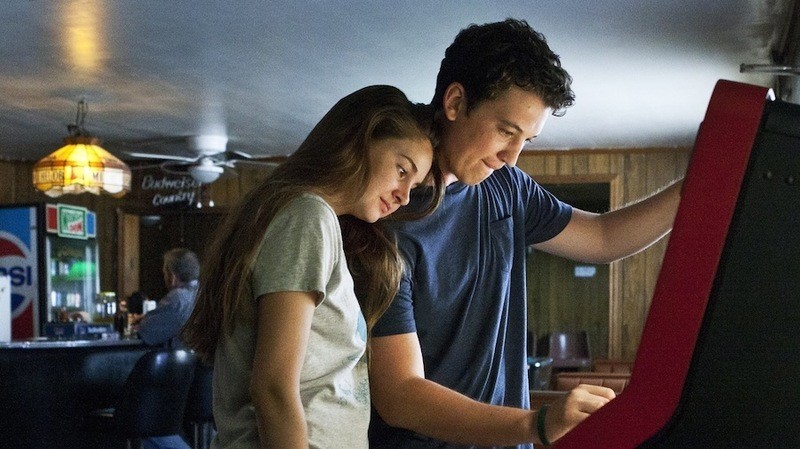
What you both do better than anyone is make films about relationships that aren’t dependent on happy endings in order to be rewarding. Even if the relationship doesn’t last, the self-discovery and self-evolution that occurred during it made the experience worth having.
MH: Well, we now have to basically steal what you just said because you’ve described exactly why we tell the stories that we do, including this movie about the making of a movie. What intrigued us about “The Disaster Artist” was not the inside baseball of making a movie. When we read the book, it was the relationship that jumped out at us. We wanted to explore how this friendship was a little dysfunctional at the start, then was tested and ultimately solidified.
SN: Michael and I have a mutual attitude towards happy endings, in that they’re bullshit. The story hasn’t ended yet, because it doesn’t end, really, and at best, all you can hope for is that it will continue in a positive direction. You hope that everything will remain as good for the characters as it is prior to the fade-out. That’s really the best thing that you can hope for. There are no guarantees. The ending of “The Graduate” is my be-all and end-all. Every time I watch it, I come away with a different attitude towards what is going on there. We are always trying to replicate that kind of ending, where you find yourself debating it on the ride home. That’s all we want to do.
The final shot of “The Spectacular Now” is a brilliant example of this sort of ending, as every possible option flickers across Shailene Woodley’s face just before the film cuts to black.
SN: That ending was the only thing we changed from Tim Tharp’s great book.
MH: The novel’s conclusion is much more bleak. Sutter does not go to find Aimee. Instead, he ends up in a drunken stupor on the side of the road.
SN: But we wanted to see if Sutter may have a chance. The fun thing about the ending of “The Spectacular Now” is that you are not entirely sure what you are rooting for. Do you want Aimee to come back to him, or do you want Sutter to go f—k himself? You are also left in that moment with them. We are always looking for a story that has those levels.
MH: Roger Ebert’s review of “The Spectacular Now” meant so much to us personally. It took us five years to get that movie made, and his review was just beautiful. The fact that it also happened to be one of his last reviews made it all the more meaningful. When I was in college in the ’90s, I had a CD-Rom that contained all of Ebert’s reviews, and my buddies and I would sit around and read them well into the night.
SN: That is so geeky.
MH: It was geeky, but we didn’t care. [laughs] His reviews were so awesome.

